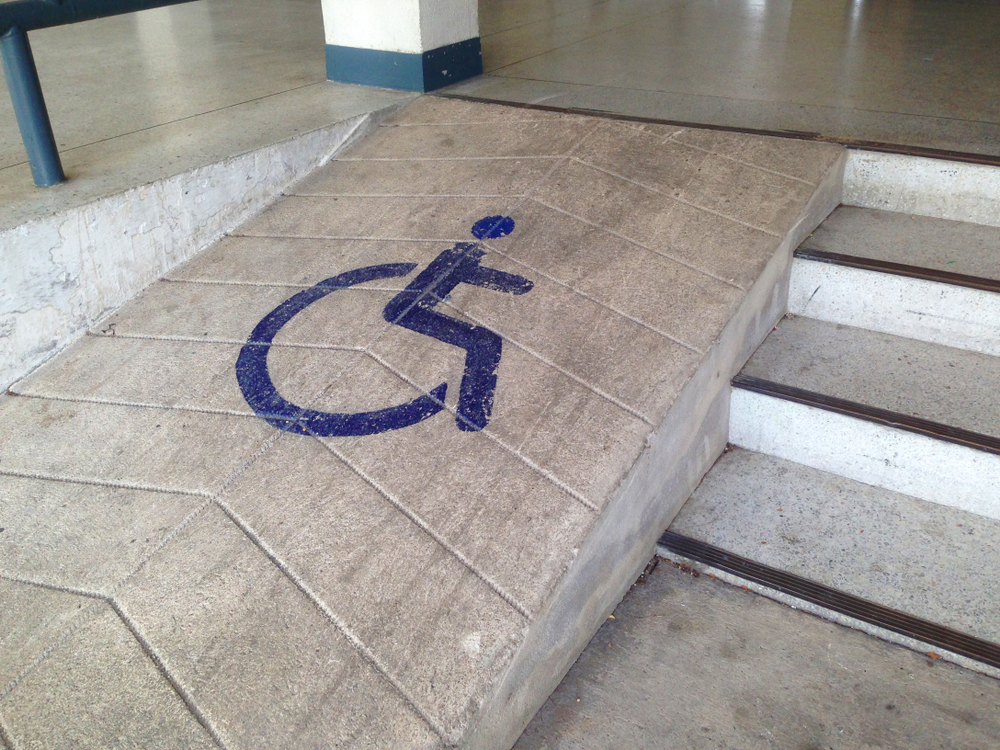Concrete and Compliance Tips for ADA Adherence to Design

Concrete is widely used for building sidewalks, paths, and entrances to public spaces. Concrete structures that are not built with accessibility in mind can be a significant barrier for people with disabilities. The Americans with Disabilities Act (ADA) establishes standards for accessibility to ensure that everyone can easily navigate public spaces. We’ll look at how concrete can be used to create ADA-compliant spaces that promote inclusivity and equal accessibility for everyone.
Understanding ADA Requirements
The ADA outlines guidelines for the construction and maintenance of accessible concrete features. Consider these key points when designing concrete features:
Sidewalks
Public sidewalks should be at least three feet wide to allow wheelchairs and mobility aids to pass comfortably. To prevent tripping hazards, the vertical height of sidewalks at joints or seams must not exceed a quarter inch.
Ramps
Ramps are essential for navigating elevation changes. The ADA requires a slope of 1:12, which means that for every inch of vertical rise, the ramp should extend 12 inches horizontally. Handrails are required on both sides of the ramp for extra stability.
Curb Ramps
Curb ramps bridge the gap between sidewalks and streets, allowing wheelchairs and pedestrians easy and safe access. The ADA stipulates that curb ramps have a slope ratio of 1:12 and a minimum landing area at both the top and bottom.
Entrances
Building entrances should be accessible for people with disabilities. Doorways must be at least 36 inches wide to accommodate wheelchairs, and automatic door openers should be installed where possible. To eliminate trip hazards, door thresholds should be low or ramped.
Designing Accessibility with Concrete
We can ensure ADA compliance by incorporating specific design features into concrete structures:
Concrete Sidewalks
Sidewalks must be constructed with great care and attention to detail to ensure a level, smooth surface without any cracks or irregular joints. To prevent trip hazards, expansion joints are necessary for concrete to move and should be designed and maintained properly. Consider installing detectable warning surfaces on crosswalks for visually impaired pedestrians.
Ramp Design
For optimal usability, concrete ramps must be built with a 1:12 slope. Handrails must be secured to the ramp wall at an appropriate height. Consider adding textured surfaces to ramps for better traction when wet.
Curb Ramps
Concrete curb ramps should be seamlessly integrated with sidewalks and roads. It is important to ensure that the landing area and slope are correct for a safe transition.
Entrances
Prefabricated concrete frames can be used to construct doorways that are at least 36 inches wide. Automated door openers can be easily integrated for easy entry. Concrete can be used to create low-profile thresholds and ramped entryways.
The Basics and Beyond
Inclusion goes beyond meeting minimum requirements. Here are a few additional considerations when designing ADA-compliant concrete features:
Signage
Clear, concise signage strategically placed can help people find accessible entrances and navigate pathways. Consider Braille or pictograms to accommodate visually impaired individuals.
Restroom Accessibility
Restrooms should have features that make them accessible to people with disabilities, such as grab bars and lowered sinks.
Maintenance
To ensure long-term accessibility, it is important to maintain concrete surfaces. Address cracks, unevenness, or damaged ramps immediately to ensure a safe, usable environment.
Building a More Inclusive Future
We can create accessible public spaces by using concrete designs that comply with ADA standards. This creates a feeling of inclusion, allowing people with disabilities to participate in all aspects and activities of the community. Even small changes to concrete design can have a significant impact. Let’s build a more inclusive world with concrete, which is versatile and durable.
This post was written by a professional at PJ Concrete. PJ Concrete, based in Los Angeles, CA, excels in delivering top-notch concrete solutions tailored to your needs. Specializing in Custom Driveways, Custom BBQs, eliminating Trip Hazards, ADA Adherence, Hardscape, and Structural projects, they are dedicated to enhancing the functionality and aesthetic of your property. Trust us for durable, expertly crafted concrete work that stands the test of time. Choose PJ Concrete for quality and precision in every project.





